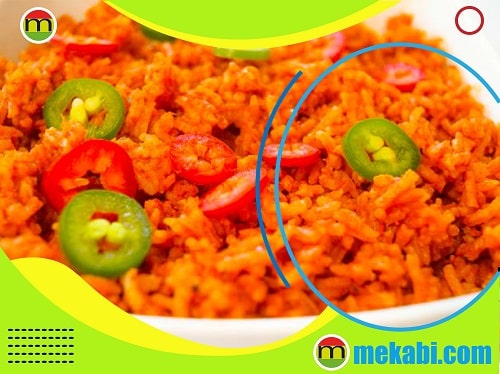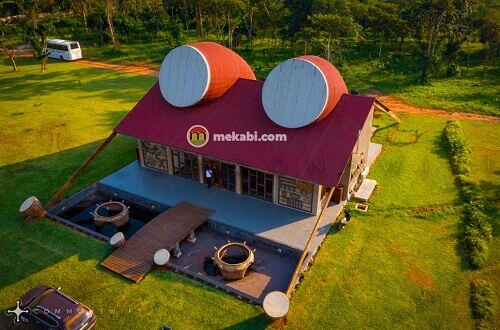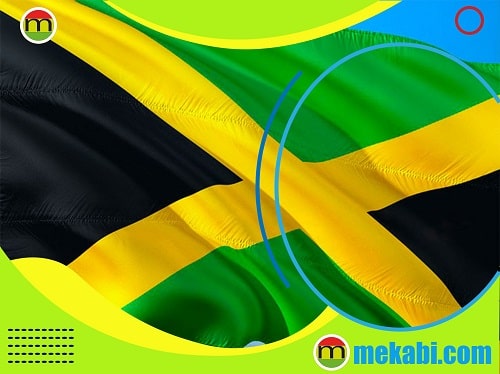20 Interesting Facts About Ghanaian Foods
Exploring the rich tapestry of Ghanaian foods unveils a delightful fusion of flavors, deeply rooted in traditions and shaped by diverse regional influences.
As a vibrant and culturally diverse country in West Africa, Ghana not only boasts a fascinating history and breathtaking landscapes but also a culinary heritage that captivates the taste buds.
Ghanaian cuisine is a symphony of hearty stews, flavorful spices, and an array of street snacks that reflect the country’s diverse culinary landscape.
In this exploration of Ghanaian foods, we embark on a journey to unearth intriguing facts that illuminate the significance of these dishes in the daily lives of the Ghanaian people.
Join us as we delve into the essence of Ghana’s culinary culture, where every bite tells a story of tradition, community, and the rich tapestry of West African flavors.
The Staple Foods In Ghana
Let me provide a more detailed explanation of Ghanaian cuisine and the importance of staple foods like yam, cassava, and plantains.
Ghanaian cuisine is a delightful fusion of flavors, reflecting the rich culinary traditions of the country. Central to many Ghanaian dishes are three key staple foods: yam, cassava, and plantains.
These ingredients serve as the foundation for a wide array of mouthwatering and diverse dishes that cater to various tastes and preferences.
- Yam: Yam is a starchy root vegetable that holds a special place in Ghanaian cuisine. It is used to create dishes like “fufu” and “banku.” Fufu, for example, is made by pounding yam (or sometimes cassava and plantains) into a smooth, elastic dough-like consistency. It is often served with a variety of flavorful soups and stews, such as light soup, groundnut soup, or palm nut soup. The pounded yam acts as a perfect accompaniment to soak up the delicious flavors of the soups.
- Cassava: Cassava is another essential ingredient in Ghanaian cooking. It is commonly used to make “gari,” a granular flour that is used in dishes like “eba” or “eetor.” These dishes are also enjoyed with various sauces and soups, enhancing the overall dining experience.
- Plantains: Plantains, which are similar to bananas but starchier, are widely used in Ghanaian cuisine. They can be fried to create “kelewele,” a popular and spicy street food snack. Plantains can also be boiled and mashed to make “platanos,” which serve as a side dish for many meals.
In addition to these staples, Ghanaian cuisine includes a diverse range of proteins, including fish, chicken, goat, and beef, often prepared with aromatic spices and sauces. Seafood is particularly popular in coastal regions, contributing to dishes like “light soup with tilapia.”
Beyond these staple foods, Ghana boasts an extensive repertoire of dishes, each with its unique flavor profile, preparation method, and cultural significance. Some notable dishes include “kenkey,” a fermented corn and cassava dough often served with fried fish and spicy pepper sauce, and “ampesi,” a traditional meal featuring boiled yam, plantains, cocoyam, and garden eggs served with a palatable sauce.
Ghanaian cuisine is not just about food; it’s an integral part of the country’s culture and heritage, bringing people together through communal meals and celebrations.
Exploring Ghanaian dishes allows you to savor the rich history and flavors of this West African nation, making it an essential part of any visit to Ghana.
20 Interesting Facts About Ghanaian Foods
These are some interesting facts about Ghanaian foods you should know
Fufu
Fufu is a traditional West African staple food enjoyed in several countries, including Ghana. It is typically prepared by pounding boiled yam, cassava, or plantains until it becomes a smooth, elastic, and dough-like consistency.
Fufu is often served with a variety of flavorful soups and stews. The traditional way to eat fufu is with your fingers, rather than using a spoon.
People would pinch off a small portion of the fufu, make a small indentation in it, and then dip it into the accompanying soup before savoring the combined flavors.
This hands-on approach to dining is a common practice in many West African cultures and adds a communal and sensory dimension to the meal, allowing diners to fully engage with the food and its rich flavors.
Banku
“Banku,” is a traditional Ghanaian dish that is made from fermented cornmeal and cassava dough. To prepare banku, the fermented dough is cooked in a metal pot until it forms a stretchy and smooth ball-like consistency.
Banku is commonly served with soup or stew, making it a popular staple in Ghanaian cuisine.
The dish’s unique texture and flavor make it an ideal accompaniment to a variety of soups and stews. The combination of banku with flavorful soups, such as light soup, groundnut soup, or palm nut soup, creates a harmonious and satisfying meal.
Additionally, banku pairs well with fried fish, adding a delightful contrast in textures and tastes to the overall dining experience.
Banku, like many Ghanaian dishes, is enjoyed not only for its taste but also for its cultural significance. Sharing a meal of banku and soup is a common practice in Ghana, fostering a sense of togetherness and communal dining.
This dish reflects the diversity and depth of Ghana’s culinary heritage, making it a must-try for anyone looking to explore the country’s rich and delicious cuisine.
Kenkey
Kenkey is a steamed cornmeal dough that is often wrapped in plantain leaves and served with a variety of accompaniments, including fried fish, soup, or stew. It is a popular and traditional food item in Ghana and other West African countries.
To prepare kenkey, fermented cornmeal dough is mixed with water to create a consistent, smooth texture.
The mixture is then wrapped in plantain or banana leaves and steamed until it achieves a firm and dough-like consistency. Kenkey is known for its slightly sour taste, which is a result of the fermentation process.
Typically, it is served with a range of savory dishes, such as fried fish, soups, or stews. The combination of kenkey with these flavorful accompaniments provides a well-rounded and satisfying meal that is deeply rooted in Ghanaian culture and culinary traditions.
Kenkey, like many Ghanaian dishes, showcases the diversity and richness of the country’s cuisine, offering a delightful and authentic taste of the region’s food culture.
Jollof Rice
Jollof rice is a beloved and iconic dish in West Africa, known for its rich flavor and delicious taste. Each West African country has its own unique take on jollof rice, and the Ghanaian version is particularly famous for its distinct and flavorful preparation.
In Ghana, jollof rice is often prepared with long-grain parboiled rice cooked in a tomato-based sauce seasoned with a blend of spices, including chili peppers, onions, garlic, and various aromatic herbs.
This combination of ingredients gives the dish its signature taste and vibrant red or orange color. Jollof rice is a versatile meal and can be served on its own or accompanied by various proteins such as chicken, beef, or fish.
Ghanaian jollof rice is a favorite at social gatherings, celebrations, and family meals. It’s a symbol of togetherness and is enjoyed by people of all ages.
The dish’s popularity extends beyond Ghana, with variations found in several other West African countries, each with its unique regional twist on the classic recipe.
Jollof rice is not only a delicious meal but also a cultural staple, representing the warmth and hospitality of West African cuisine. It’s a must-try for anyone interested in experiencing the vibrant and diverse flavors of the region.
Waakye
The Ghanaian dish you’re describing is called “waakye” (pronounced waa-chay). Waakye is a traditional Ghanaian meal made from a combination of rice and beans, typically black-eyed peas.
It is known for its distinctive reddish-brown color, which is achieved by cooking the rice and beans together with millet leaves or sorghum leaves, locally known as “waakye leaves.”
Waakye is often served with a variety of side dishes, such as spaghetti, gari (fermented cassava flakes), and salad leaves, which add a refreshing and crunchy element to the meal.
The dish is typically garnished with hot pepper sauce, fried plantains, boiled eggs, and a protein like fish or meat.
It is a popular street food in Ghana and is enjoyed by people of all ages. The combination of ingredients and the interplay of flavors in waakye make it a beloved and satisfying meal that showcases the diversity and creativity of Ghanaian cuisine.
Red Red
Red-red is a popular Ghanaian meal made from black-eyed peas, which are cooked with palm oil, onions, tomatoes, and a variety of spices.
The dish gets its name from the vibrant red color of the palm oil and tomato sauce in which the black-eyed peas are stewed.
Red-red is often served with fried plantains, which add a sweet and savory element to the meal. The combination of the rich, earthy flavors of the beans, the slightly spicy and tangy tomato sauce, and the sweetness of the fried plantains creates a delicious and satisfying dish that is enjoyed by many in Ghana.
It’s a comforting and flavorful meal that exemplifies the diversity and richness of Ghanaian cuisine, and it’s a must-try for anyone looking to explore the country’s culinary heritage.
Groundnut Soup
Groundnut soup is a popular dish in West African cuisine, including Ghana. It is made by blending groundnuts (peanuts) with tomatoes, onions, and a variety of spices to create a creamy and rich soup.
Groundnut soup is often served with traditional staples like banku, fufu, or rice. The combination of the nutty, savory soup and the starchy base creates a well-balanced and satisfying meal.
Additionally, it’s common to include proteins like chicken, goat, or fish in the soup to add depth and flavor to the dish.
This dish is not only delicious but also a reflection of the diverse and vibrant food culture in Ghana and West Africa.
It’s a comfort food enjoyed by many and showcases the culinary creativity and traditions of the region.
Peanut Butter Soup
Groundnut soup is a popular dish in West African cuisine and is made by combining peanut butter, tomatoes, onions, and various spices to create a rich and creamy soup.
This savory and nutty soup is often served with traditional staples like rice or fufu, a starchy side dish that complements the soup’s creamy texture.
Additionally, proteins such as chicken, goat, or fish are frequently added to enhance the flavor and provide a source of protein.
Groundnut soup is a beloved and comforting dish in the region, and it represents the diversity and deliciousness of West African cuisine.
It’s a popular choice for both family meals and special occasions, and it offers a delectable taste of the culinary traditions in this part of the world.
Kelewele
The dish is called “kelewele.” It’s made by frying bite-sized pieces of ripe plantains seasoned with cayenne pepper, ginger, and spices until they’re crispy and delicious. It’s a popular and tasty snack in Ghana.
Koose
Koose is a snack that is made from black-eyed peas ground into a paste, mixed with spices, and fried till it gets crispy.
Tuo Zaafi
This Northern Ghanaian dish is a special meal made with millet flour and served alongside a tasty soup. The heart of this dish is the millet flour, which is turned into a dough-like mixture.
People usually shape it into small, round dumplings, which give the dish its unique texture.
The soup is where the dish shines. Depending on your preferences and the region, it can take different forms.
You can have a hearty vegetable soup filled with fresh greens, roots, and local spices. If you prefer, you can choose a version with meat, making it more savory and delicious.
And for those who love seafood, there’s a fish option that adds a taste of the sea to the meal.
When you enjoy a bowl of these millet dumplings and soup, you’re not just savoring a delightful meal but also experiencing the rich culinary traditions of Northern Ghana.
This dish reflects the region’s warmth and hospitality, making it a must-try for anyone who wants to taste authentic Ghanaian food.
Okro Soup
This is a hearty soup prepared by blending okra, tomatoes, onions, and a blend of spices. It is commonly served with a side dish known as “banks.”
Koko And Koose
Koko is a traditional Ghanaian porridge crafted from millet or cornmeal. It’s typically enjoyed alongside a popular side dish known as “Koose.”
Shito
This is a spicy pepper sauce created from a blend of chili peppers, ginger, onions, and various spices. It’s frequently used as a condiment to add extra flavor to rice dishes.
Ghanaian Sausages
This is a dish made by combining ground pork or beef with a mix of spices, including nutmeg, ginger, and coriander. Afterward, it’s often grilled and served with either kenkey or plantains.
Grilled Tilapia
This is a well-liked Ghanaian dish that is frequently served with banks or rice. It features tilapia fish that is seasoned with a flavorful blend of spices, chili peppers, and garlic.
Pito
This is a classic Ghanaian beer crafted from fermented millet.
Bofrot
This snack, also known as “puff puff,” is a popular Ghanaian treat that resembles doughnuts. It’s made by creating a dough from a mixture of flour, sugar, yeast, and water, which is then fried until it becomes a lovely golden brown color.
Fante Kenkey
Fante kenkey is a distinct variety of kenkey that holds a special place in the hearts of people in the central and western regions of Ghana.
It’s crafted using a blend of cornmeal and cassava dough that has undergone a lengthy fermentation process. This extended fermentation gives Fante kenkey its unique sour taste and a soft, pleasant texture.
Conclusion
Ghanaian foods are more than just sustenance; they are a reflection of the nation’s heritage and values.
From the communal spirit of sharing meals to the diverse use of ingredients, Ghana’s cuisine is a source of pride and identity for its people.
As we’ve delved into these interesting facts about Ghanaian foods, we’ve gained a deeper appreciation for the country’s culinary treasures.
Whether you’re savoring a spicy bowl of jollof rice or indulging in a crispy bite of kelewele, Ghana’s cuisine continues to captivate both taste buds and hearts around the world.
You can also check out our Ghana-related articles:









